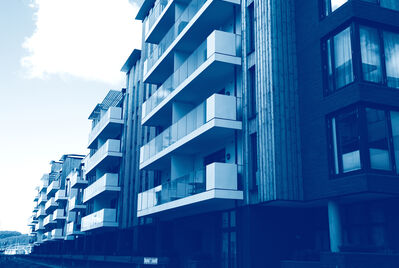
According to the English Housing Survey, around “7% of private rented dwellings had some type of damp problem, compared with 6% of social rented dwellings and 2% of owner occupied dwellings”. The difference between damp and condensation is often misunderstood, so it’s important to know the causes and what to do to rectify any issues.
So, here are our top 10 ‘need to knows’ for being legally compliant when it comes to damp, mould and condensation.
- It is a landlord’s legal responsibility to maintain the structure of the property in a good state of repair and any form of damp is likely to be considered a problem. If a property shows any sign of damp, it’s important to deal with it as soon as possible.
-
There are three main types of damp in rented properties:
Rising damp. This is water coming up from the ground, which affects the bottom part of a property, up to about a metre, and it’s something that should be picked up by a qualified surveyor when you buy a property. In most cases, it can be fixed by installing a damp-proof course, which should then last and protect the property for about 25-30 years.
Penetrating damp. This is either water getting in from the outside as a result of damaged brickwork, degraded window seals or roof issues, or it might be an internal leak, such as a damaged water tank or badly-sealed bathroom fitting. There are likely to be damp patches on walls or ceilings. This typically requires a builder or plumber to fix.
Condensation. This is caused when warm air collides with cold surfaces or there is too much humidity in a property. It begins as dampness on windows, walls and ceilings that then runs down the surface and collects in pools, usually on window sills and at the edge of flooring and can cause mould. This can be solved with better ventilation. - Make sure you secure the right diagnosis so the problem can be solved first time around.
Damp, mould and condensation problems caused by tenants - Condensation and mildew are two of the most common problems in rented properties. Sometimes they occur because the landlord has not installed sufficient ventilation measures or the heating system is ineffective, but it could also be down to the tenant not opening windows or using extractors in kitchens/ bathrooms. While some landlords believe that, since the tenant caused the problem, it’s down to them to fix it, the simple fact is that it is your responsibility to ensure their accommodation is maintained in a safe condition.
- Tenant’s negligence. If a tenant causes the problem, for example allows a bath to overflow a landlord should be able to recover the costs of fixing the problem, either during the tenancy or by applying to the relevant deposit protection scheme to retain some of their deposit at the end of the tenancy. However, the property still needs to be fit for habitation and it is also in a landlord’s interest to attend to damage as quickly as possible before it becomes a bigger problem.
- Remember with the correct insurance, it should be possible to claim for accidental or malicious damage.
Potential consequences of not fixing a damp issue - If your tenant brings a problem to your attention and you don’t deal with it to their satisfaction, they may inform the local council, who could issue an improvement notice. If not adhered to, this could result in:-
a. A fine up to £30,000
b. Being placed on the national ‘rogues database’
c. A banning order being issued, preventing you from letting property. - As part of the upcoming Fitness for Human Habitation legislation, from the 20th March, tenants will be able to take landlords to court and apply for an injunction to compel their landlord to make repairs and can also apply for financial compensation/damages.
Preventative measures - Consider and take advice on installing a ventilation system which can dramatically reduce the likelihood of condensation and mould forming.
- Regular periodic checks on both the interior and exterior of the property will help to ensure any problems are spotted quickly, even if the tenant doesn’t realise it’s a problem.
If we manage your property, we are aware how important it is to diagnose and fix any damp or mould problems that arise. If you currently manage your property yourself and would like any advice, or to discuss moving to a full-management service with us, simply call into your local Reeds Rains branch and one of the team will be happy to help.
The Reeds Rains Content Marketing Team



